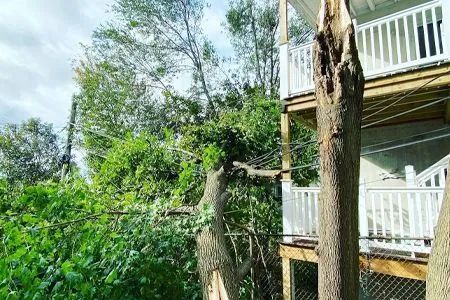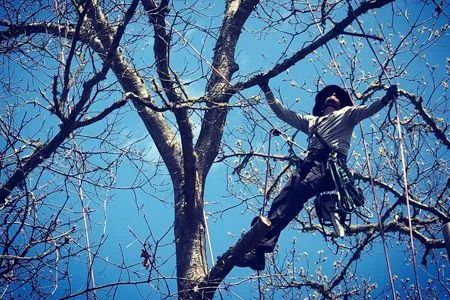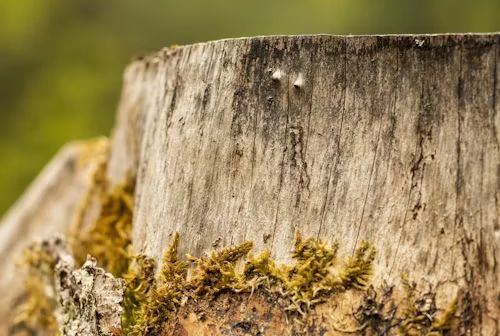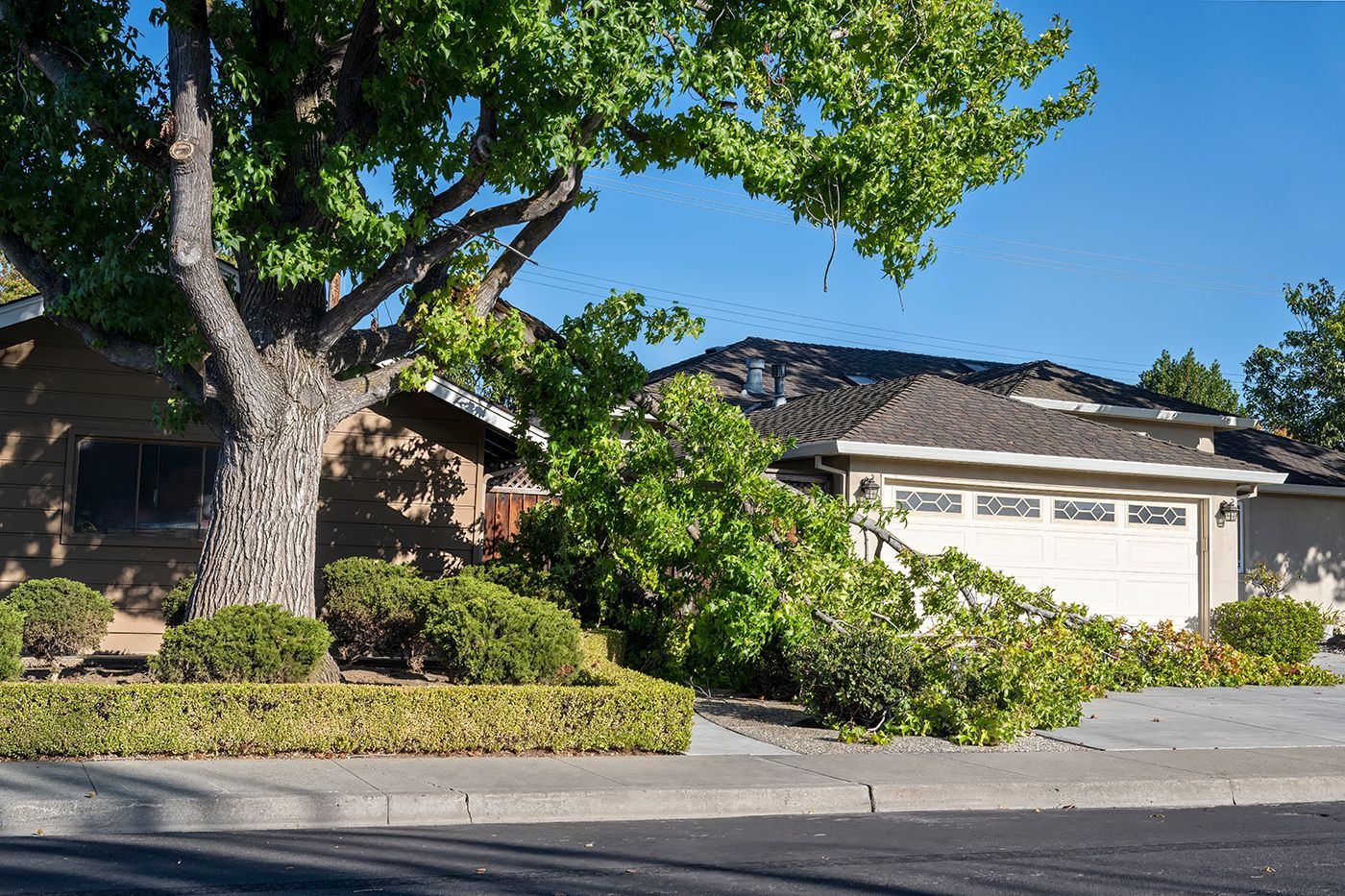JSK Tree Care Blog

Storms can put tremendous stress on trees, especially those that are already weakened or unstable. High winds, heavy rain, and saturated soil can cause vulnerable trees to lose their balance or break apart, posing serious dangers to nearby homes, vehicles, and people. While healthy trees can often withstand harsh weather, certain warning signs indicate that a tree may be at an increased risk of falling. Identifying these signs early and taking action with the help of a professional arborist can help prevent costly damage and protect your safety. At JSK Tree Care, our local arborists are experts at identifying hazardous trees and safely removing them. Here are four warning signs that a tree may be more likely to crash down during a storm. Significant Leaning or Shifting A tree that is noticeably leaning, especially if the lean has become more pronounced over time, is a strong sign of instability. Leaning can occur due to weakened roots, soil erosion, or uneven weight distribution within the canopy. If the lean is sudden or accompanied by cracking in the soil around the base, it could mean the roots are failing, putting the tree at high risk of falling in strong winds. Splits in the Trunk Structural damage—such as large cracks, splits, or cavities in the trunk—can greatly reduce a tree’s ability to withstand the pressure of a storm. These weaknesses make it easier for the trunk to break apart under stress. Cracks near major branch unions or the base of the trunk are especially concerning and should be evaluated by a professional as soon as possible. Dead/Decaying Wood Dead branches or signs of internal decay—such as soft or hollow wood—indicate that parts of the tree are no longer structurally sound. Decay weakens the tree from the inside out, making it more prone to breaking during heavy winds. Fungal growth, such as mushrooms at the base, often signals root or trunk rot that can compromise stability. Root Problems/Uplifted Soil Healthy roots anchor a tree firmly in the ground. If you notice exposed roots, soil heaving, or cracks around the base, the tree’s root system may be failing. Storms with heavy rainfall can loosen already weakened roots, increasing the likelihood of the tree toppling over. Root issues are often hidden, so surface signs should never be ignored. Tree Removal in Falmouth, MA For tree removal in Falmouth and the surrounding area, contact JSK Tree Care at 774-506-4655 . Feel free to give us a call to request an arborist estimate in Falmouth!

Trees are an important part of your landscape, but caring for them isn’t always straightforward. From pruning to hazardous removal, tree care often requires expertise beyond what most homeowners can handle safely on their own. That’s where an ISA-certified arborist comes in. These professionals have the training, certification, and experience to diagnose problems and provide solutions that protect both your trees and your property. At JSK Tree Care, our local ISA-certified arborists provide expert tree services in the greater Falmouth area. Here are four situations where calling an ISA-certified arborist is the best decision. When a Tree Needs to Be Removed Tree removal can be dangerous, especially if the tree is large, diseased, or located near a house, power line, or roadway. An ISA-certified arborist has the proper equipment and training to remove trees safely and efficiently. They can also determine whether removal is absolutely necessary or if other solutions are available. When Trees Show Signs of Disease or Pests Diseases and pests can spread quickly through your trees and cause irreversible damage if not addressed early. If you notice discolored leaves, unusual growths, or increased insect activity, an ISA-certified arborist can identify the problem and recommend the right course of action. Their knowledge helps preserve the health of your trees and prevent issues from spreading across your property. When Trees Need Structural Pruning Pruning may seem simple, but improper cuts can weaken a tree, invite disease, or ruin its shape. Structural pruning is especially important for young trees, as it sets them up for healthy growth in the future. An ISA-certified arborist understands how and where to make cuts to improve tree structure, reduce hazards, and maintain natural beauty without harming the tree. When Storm Damage Has Occurred Severe storms often leave behind broken limbs, split trunks, or even partially uprooted trees. These situations can be hazardous if large branches are dangling or the tree is unstable. An ISA-certified arborist can assess the extent of the damage and decide whether the tree can be saved or if removal is necessary. They also ensure cleanup is done safely. ISA-Certified Arborist in Falmouth, MA For an ISA-certified arborist in Falmouth and the surrounding area, contact JSK Tree Care at 774-506-4655 . We offer expertise in both residential and commercial tree services in Falmouth. Feel free to give us a call to arrange an arborist estimate in Falmouth, MA!

After a tree has been cut down, many property owners are left with an unattractive stump that often becomes more of a nuisance than they expected. While it may seem harmless at first, an old tree stump can actually detract from your landscape and create problems over time. Rather than leaving it to rot or trying to remove it on your own, hiring a professional to remove the stump completely can have significant benefits. At JSK Tree Care, our local arborists provide expert stump removal in the greater Falmouth, MA area. Here are five ways that professional stump removal can improve your property. Boosts Curb Appeal One of the most noticeable benefits of stump removal is the immediate visual improvement to your yard. Tree stumps disrupt the clean look of a well-maintained landscape and can make your property appear unkempt. Removing them opens up your yard, giving it a smoother and more attractive appearance. This is especially important if you plan to sell your home. Frees Up Usable Space A leftover stump can take up valuable real estate in your yard. Whether you want to plant new trees or simply expand your lawn, that space becomes usable again once the stump is removed. Reduces Safety Hazards Tree stumps pose a tripping hazard, particularly for children, visitors, or anyone doing yard work. They’re also a danger to lawn equipment, which can be damaged if it runs into the stump. Over time, stumps can become hidden by grass or weeds, increasing the risk of injury. By removing the stump professionally, you eliminate this hazard. Prevents Pest Infestations Old stumps are prime targets for pests like termites and carpenter ants. These insects often establish colonies in rotting wood and can eventually spread to other parts of your landscape or even to your home. Removing the stump helps cut off this potential infestation source before it becomes a bigger problem. Stops Unwanted Growth Even after a tree is cut down, its stump can continue to sprout new shoots and suckers. This regrowth can be frustrating and difficult to control, especially if you're trying to maintain a neat landscape. Professional stump removal can stop any future growth and save you from repeated yard maintenance headaches. Stump Removal in Falmouth, MA For expert stump removal in Falmouth, MA and the surrounding area, contact JSK Tree Care at 774-506-4655 . Feel free to give us a call to ask for an arborist estimate in greater Falmouth!

A dead tree isn’t just an eyesore—it can also pose serious safety risks to your home and anyone nearby. Knowing how to recognize the signs of a dead tree is important so you can take timely action. At JSK Tree Care, our local arborists are experts at identifying dead trees and safely removing them. If you notice any of the following symptoms, it’s a good idea to call the arborist for a professional inspection and potential removal. Leafless Branches One of the most obvious signs that a tree is dead is a lack of leaves during the growing season. If your tree isn’t producing foliage when surrounding trees are full and green, that’s a red flag. In addition, dead branches are usually dry, brittle, and break easily. If you snap off a branch and it crumbles in your hand or has no green inside, your tree may no longer be alive. Peeling or Missing Bark A healthy tree has a continuous layer of bark that protects its inner tissues. If large sections of bark are missing or peeling away, it could indicate that the tree is no longer able to sustain itself. Bark that easily falls off and doesn’t grow back is a clear warning sign that the tree is dead or dying. Fungal Growth at the Base Mushrooms and other fungi growing around the base of the trunk can be a sign of decay. While not all fungal growth means a tree is dead, the presence of fungi often points to root rot or internal decay. If the roots are rotting, there’s a chance that the tree may be structurally unstable and could fall without warning. Large Sections of Dead Wood Deadwood in the canopy or along the trunk is a strong indication that a tree is no longer thriving. If you notice large limbs that are dry, cracking, and devoid of leaves or buds, the tree may be beyond saving. Deadwood can also fall unexpectedly, making the tree a potential hazard to people and property. Tree Removal in Falmouth, MA For tree removal in Falmouth and the surrounding area, contact JSK Tree Care at 774-506-4655 . We offer expertise in both residential and commercial tree services in Falmouth. Feel free to give us a call to arrange an arborist estimate in Falmouth, MA!


